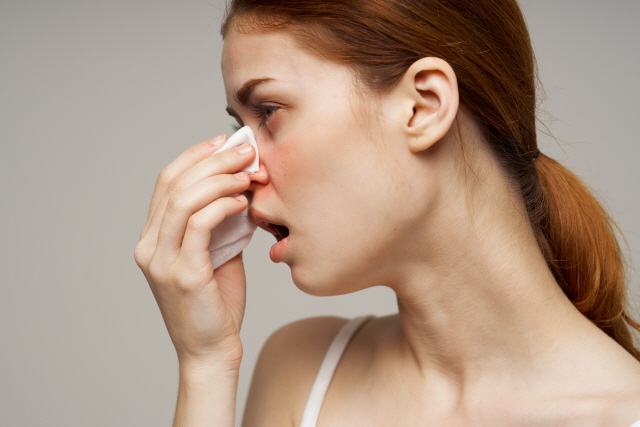
Differentiate Jien Geng From The Indications Of Ma Huang, Xi Xin, and Ting Li.
By Hyunchang Cho, L.Ac., Ph.D ([email protected])
*Jie Geng: Symptom Indicator Score ++, Frequency of Use++
-Main Symptoms: ①Thick, yellowish respiratory discharge (nasal discharge, phlegm, dry snot) + coughing, congestion, wheezing, and shortness of breath.
-Possible Symptoms: ②Throat discomfort, irritation, soreness, pain and such due to ①.
-Another Main Symptom: ③Redness, heat, swelling, pus and such due to purulent skin or internal organs inflammation.
- Pharmacological Hypothesis of Jie Geng
Purulent inflammation, including respiratory symptoms, skin problems, benign tumors and such that accompany thick, yellowish pus.
① Purulent inflammation causes respiratory symptoms such as thick, yellowish nasal discharge and phlegm, along with coughing, nasal congestion, wheezing, shortness of breath, and sometimes sore throat.
→ Rhinitis, sinusitis, chronic cough, asthma, bronchitis, pneumonia, tonsillitis, sore throat, etc.
② Purulent inflammation causes skin problems and benign tumors accompanying thick, yellowish pus. Sometimes, only redness, heat and swelling.
→ Atopic dermatitis, purulent ulcer, boil, ear infection and such.
Jie Geng is used for respiratory symptoms, skin problems, and benign tumors accompanying thick, yellowish pus due to purulent inflammation.
▷Jie Geng treats respiratory symptoms caused by purulent inflammation. Thick, yellowish nasal discharge and phlegm are present, which lead to coughing, shortness of breath, wheezing, and sometimes sore throat. In practice, Jie Geng is used for various respiratory disorders such as rhinitis, sinusitis, chronic coughs, asthma, bronchitis, pneumonia, and tonsillitis.
▷Jie Geng is used for boils with thick, yellowish pus, redness, and heat due to purulent skin inflammation, including impetigo, atopic dermatitis, purulent ulcers, etc.
▷Jie Geng is sometimes used for purulent inflammation of internal organs, which also accompanies thick, yellowish pus.
Mechanism of Jie Geng’s purulent, benign tumors
Supposing harmful microbes enter our body, inflammatory and immune responses occur, blocking the microbes from spreading further. Inflammation is usually localized, with clear borders. If dead or alive microbes mix with white blood cells, body fluids, toxins, and tissue fragments, they form pus. If such pus locally accumulates, it becomes an abscess. Abscesses can pressure the surrounding tissues, causing discomfort and pain.
- Clinical Signs of Jie Geng
In Shang Han Lun and Jin Kui Yao Lue, Jie Geng is used in formulas such as Pai Nong Tang, Pai Nong San, Jie Geng Tang, Jie Geng Bai San, Zhu Ye Tang, Shu Yu Wan, and Hou’s Hei San. In clinical practice, Pai Nong Tang and Pai Nong San are widely used. Sometimes Jie Geng would be used as Pai Nong San Ji Tang, which is a combination of Pai Nong Tang and Pai Nong San, and also as Wei Jing Jia Jie Geng Tang, which is a combination of Wei Jing Tang and Jie Geng.
We use Jie Geng for respiratory disorders with yellow, thick nasal discharge and phlegm. If the respiratory discharge is clear and watery, we use Ma Huang, Xi Xin, or Ting Li. With Jie Geng, sometimes shortness of breath may appear. In practice, it is often difficult to distinguish clear, watery discharge from yellowish, thick discharge. Using the above questionnaire to correctly distinguish Jie Geng from Ma Huang, Xi Xin, and Ting Li is important and practical. To use Jie Geng, we must first be able to rule out Ma Huang, Xi Xin, and Ting Li.
Respiratory Disorders
▷Purulent inflammation of the nasal cavity that manifests as yellow, thick nasal discharge, dry snot, stuffy nose, postnasal drip and such. Jie Geng is widely used for rhinitis and sinusitis, which accompany yellow, thick nasal discharge and stuffy nose due to inflammation of the purulent nose. Sometimes, dry snot and postnasal drip can also be present.
Clinical Expressions
▷Nasal congestion (stuffy nose): Nasal congestion is persistent throughout the year, regardless of cold/heat stimulus, postural change, or change of seasons. ☞ We can rule out Ma Huang and Xi Xin, and rule in Jie Geng and Zao Zia.
With Jie Geng, the nose is always blocked even after a hot shower/bath, sweating from exercise, and conditions that would increase body heat.
▷In some cases, a stuffy nose can cause headaches.
▷Nose is filled with yellow and thick nasal discharge. Sometimes, such yellow and thick nasal discharge can be seen with nasal endoscopy.
▷Sometimes, a small amount of yellow and thick nasal discharge would be found inside the nose.
▷Yellow and thick nasal discharge would come out upon blowing the nose or sneezing.
▷Sometimes, patients will say they have lots of dry snot, making them pick their noses often.
▷Postnasal drip: nasal discharge would often drip from the nose into the throat, becoming phlegm, and could spit out.
Purulent Disorders
▷Another Main Symptom: redness, heat, swelling, pus and such due to purulent inflammation of the skin or internal organs
































